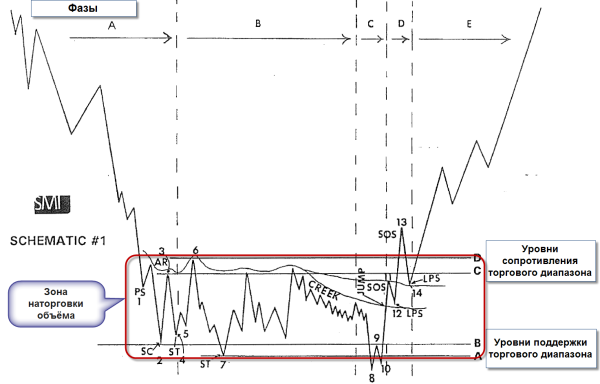101,000 Share prices are constantly going up and down due to small and large forces. If you can identify these forces and understand their impact, you can learn to predict share price movements. The Waikoff
method is a technical analysis to navigate the financial markets based on an analysis of the relationship between supply and demand forces. It was first developed by Richard D. Wycoff, a market trader and forecaster who started in 1888 as a 15-year-old stock trader.
Wycoff based its approach on its market observations of more informed, more experienced group investors. Among them were James Keane, Jesse Livermore, Andrew Carnegie, JP Morgan, Jay Gould and many others.
These were “super” traders who analyzed the market, knew why and how it was moving, and benefited from it. They had the opportunity to influence trends and price directions.
Today they are included, including the largest hedge funds, pension plans, investment banks.
Wycoff was also an avid tape reader and ran his own brokerage company. In this way, he could better observe how these super traders carefully planned and executed their trades.
Wycoff combined its state-of-the-art experience with original ideas and formulated to present a method based on several principles, methods and rights to track and trade in harmony with them.
His method became a Favorite of Wall Street, and Wycoff successfully applied it in his newsletter known as The Magazine of Wall Street.
About Waikoff Method/Principles
Vaikoff Method reveals the intentions of supertraders on the stock exchange, which he called composite operators. The method is based on an analysis of the trading volume and price of the tape. Wycoff believed that the behavior observed by volume and price movement was key to predicting future market movements. These observations led him to believe that the stock market operates under three laws.
Supply and Demand Act
If the quantity of the item (supply) is limited, the value of that commodity increases to create a supply requirement to meet that demand. Or, when there is an excess of something, then the value of that element will decrease to attract demand needed to absorb this supply.
Cause and Effect Act
For the share price to change (consequently), there must be a reason. The effect is directly proportional to this reason. The best price movement occurs when there is enough time to facilitate the distribution or accumulation period (or, in other words, the cause).
Effort and Performance Act
If there is an effort (volume in motion), the result (price of action) must be proportionate to that effort and cannot be separated from it. If this is not the case, it shows other policies in action.
Share price and volume of movement should be in harmony. If you have a large volume, you should see a lot of traffic. If you don’t see this traffic, you need to find out what’s going on.
Here you become a detective and use your tools to evaluate this result (share price) with the right effort (volume).
Summary
The Waikoff Method is an important tool used by many successful institutional and professional traders. This method can be applied to any time frame on any free market.
A practical and effective understanding of this method can allow you to learn how to determine the overall direction of the market. It also gives you an edge when trading alongside large hedge funds, pension funds and investment banks that initiate and stop big trends. The Waikoff
method teaches traders to predict market reversal, and by grabbing the third right, you’ll be ready to act at the right time in the markets.
Waikoff’s trading post method appeared as the first G-Forex.net.
